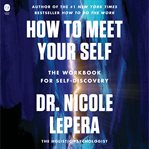Review by Booklist Review
Tina Hopgood lives a life of routine on her family's English farm. Surrounded by others yet feeling utterly alone, she wonders how her life could have ended up differently. After she loses her best friend, Tina writes to a museum regarding an artifact that was important to her decades earlier. Danish professor Anders Larsen, who leads a quiet life after his wife's death, receives the letter and decides to respond. Neither party expected a reply, let alone to make a connection that would open them back up to a world of possibilities. Told through a series of letters, Youngson's debut follows Tina and Anders' journey of discovering something that was missing from their lives, thoughtfully revealing their emotions of the present and reflections on the past. The book's slower pace and attention to detail match the patient process of letter writing, too. Through each new letter, the story moves forward with ease, feelings of isolation begin to dissipate, and room for hope grows.--Melissa Norstedt Copyright 2018 Booklist
From Booklist, Copyright (c) American Library Association. Used with permission.
Review by Library Journal Review
[DEBUT] Trying to get a better understanding of her life, disaffected English farmwife Tina Hopgood writes Professor P.V. Glob, who 50 years previously had dedicated his book The Bog People to her and her classmates after they write him a letter. The professor is long gone, but Anders Larsen, curator at the museum that houses the Tollund Man, among other significant artifacts of the bog people, responds courteously. Thus begins a series of increasingly engaged and engaging emails, as Tina, married to the self-absorbed man who got her pregnant while at school, thus ending her aspirations, struggles to articulate what she wants even as the widowed Anders blossoms with their exchanges. As they move from nicely rendered discussions of archaeology to more personal revelations, particularly about their families, Anders encourages Tina to visit the museum. Clearly, Tina senses there's something more for her in the world, and if she's not quite ready, she's on her way. The book builds quietly but surely to her turning point, which, realistically, is not an explosion but a next solid step. Verdict Luminous, affecting, and delightful, this study of humans, ancient and modern, will please those who want more than thrill-a-minute reading.-Barbara Hoffert, Library Journal © Copyright 2018. Library Journals LLC, a wholly owned subsidiary of Media Source, Inc. No redistribution permitted.
(c) Copyright Library Journals LLC, a wholly owned subsidiary of Media Source, Inc. No redistribution permitted.
Review by Kirkus Book Review
A debut novel that tells the unlikely story of an English farm wife and a Danish museum curator through their spirited correspondence.Loneliness draws them togetherthat and their keen interest in the prehistoric Tollund Man, whose perfectly preserved head is on display in Denmark's Silkeborg museum. Tina Hapgood has always wanted to visit there from her home in East Anglia; but having passed her 60th birthday, she doubts she ever will. Anders Larsenintercepting a note she's written to the (now deceased) archaeologist who discovered the Tollund Man in 1950encourages her to make the trip. And so it begins. Tina, we learn from her letters, married at 20 and had the first of her three children shortly thereafter. Her marriage is loveless, and she has many regrets about roads not taken. Anders, a widower with two grown children, loved his wife deeply; but the marriage was fraught owing to her emotional fragility. Tina and Anders exchange confidences, and their connectionthough limited to written exchangesbecomes more intimate. (In a nod to modern technology, the pair eventually shifts from letters to emails.) The book proceeds at a leisurely pace until close to the end, when a major plot turn seems to change everything. Or does it? The writing is, for the most part, poised and literate; and Tina's descriptions of the natural world she knows so well can be quite lovely. Unfortunately, she sounds way too sophisticated given the cloistered life she is supposed to have led. There is also an overly earnest quality to some of what Tina and Anders write to one another: "We have been talking to each other about where life went, and if the way we spent it was the way we meant to have spent it." (Tina) "Our letters have meant so much to us because we havearrived at the same point in our lives. More behind us than ahead of us. Paths chosen that define us." (Anders)Though well-crafted, this genteel novel never quite achieves liftoff. Copyright Kirkus Reviews, used with permission.
Copyright (c) Kirkus Reviews, used with permission.

